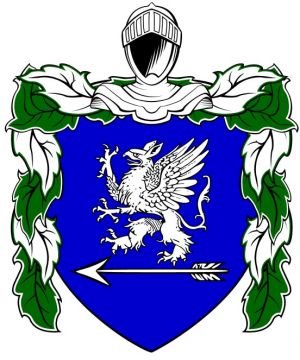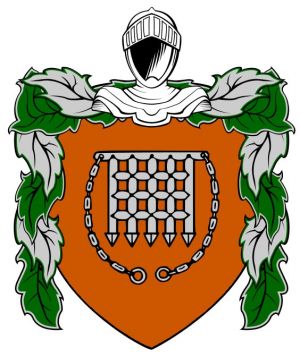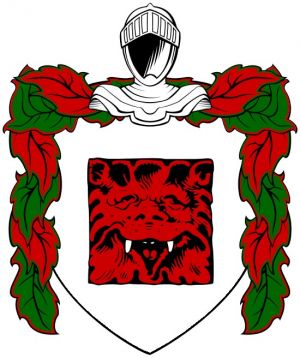Knightly Orders of Tamous
Knightly orders are a way of life in Tamous. Military orders that require an imperial (once royal) charter in order to be formed at all, the orders of Tamous field all the military in the nation. Indeed, it is not permitted for the Houses to field military in any capacity - that is a right reserved exclusively for the Imperial House, which is used to maintain the Imperial Guard and as the function by which Charters of Knighthood are granted. Instead, Houses are expected to help sponsor knightly orders, seeing that their needs are met. In return, the head of the orders - the knight-commanders - see that part of the order's military strength is funneled to aid the Houses out of gratitude.
Contents
Organization
Unlike the knights of other lands, individual knights within an order to not take their own heraldry. They are bound to take the arms of the order they are sworn to, in keeping with the philosophy in the Charters of Knighthood that enjoin a knight to forego personal glory and instead work for his order, the Holy Throne, and the empire of Tamous itself.
Every knightly order is organized according to the same structure, as ordained by the Charters of Knighthood, and the body of laws that govern the operation of those orders in Tamous. Knightly orders receive their funding from the Holy Throne, but most meet their financial burdens by the largess of the Old Houses, in exchange for the orders lending aid in their defense and goals.
- Knight-Commander: Each knightly order has a single Knight-Commander, who acts as the military head of that order. He oversees the governing of the order, and acts as its representative to the Holy Throne.
- Knights: Full knights of the order are the mainstays of the order. There are two "paths" for an order's knights: chapterhouse knights and estate knights.
- Chapterhouse Knights: Chapterhouse knights remain within the order's operations. They are based out of the order's chapterhouse, or one of the fortifications that has been rendered over to the order's guardianship. They remain surrounded by their brethren, and learn to lead armsmen in battle as part of their routine duties and assignments. Chapterhouse knights live the most dangerous lives, and are frequently made up of the younger, untempered knights, or those who prove troublesome.
- Estate Knights: When many knights achieve a certain degree of success and experience, the knight-commander offers him to allied Old Houses as an estate knight: a guardian who is placed as Master of an agricultural estate, or made a knight in a noble Household. While still charged with defending this place - including attracting a body of armsmen to aid in that defense - the estate knight's life is a little calmer. Most knights wait until they become estate knights to marry and start a family.
- Knights Errant: Those knights who are not part of any of the orders are considered knights-errant. They are usually wanderers, expected to seek out dangers in Tamous and deal with them as a means of making names enough for themselves to gain an invitation to membership in an order. Often, such knights join the households of nobility, serving long enough to gain a recommendation from the lord of that household to a friendly order.
- Knight-Magus: Knight-magi are a potent commodity for the knightly orders of Tamous. They are usually wizards of the Blade and Shield, though there are some sorcerers in their midst as well. All knight-magi are taught to ride warhorses and use mail, and they can be difficult to tell apart from the other knights in their midst - a deliberate choice, for their sudden intervention in what seems to otherwise be a melee can be devastating. Knight-magi are never estate knights, but always serve the chapterhouse.
- Squire: In simple terms, a squire is a knight's apprentice, learning the arts of his master in hopes of one day being dubbed into the knighthood proper. Most squires are adolescents, usually starting training in a chapterhouse as young as ten, and being assigned to an individual knight at the age of twelve or so. From that point on, the knight oversees the training for the youth (usually boys, but girls are not exempt from serving as knights), as well as his housing and feeding. In return, the squire works hard, serving the knight and aiding him on the field of battle. When a squire has proven his skill at arms and bravery, as well as showing a history of upholding the tenets of the order, his knight may nominate him for dubbing on Saint Audæris Eve.
- It is notable, however, that the young are not the only potential squires, and there is no shame implied in being a squire as a full adult. Nobles who have been Disavowed, or armsmen who've proven their mettle to their knight may both find a place under a knight as a squire. If a squire is at the age of adulthood, a knight is under no obligation to keep them in his service if they displease him - he may always cast them aside, taking back the arms he gave them as part of this casting-out.
Ecclesial Ties
As with so many things in Tamous, there is a threefold aspect to the knightly orders' operation. Though they receive funding from both the Holy Throne and the Old Houses, they also receive patronage to a degree from the Faith of the Holy Throne as well. They are considered as much an arm of the church as they are an arm of the emperor of Tamous.
- Preceptor of the Sword: Though the Preceptor of the Sword does not command any of the knightly orders officially, he still bears a great deal of influence over them, for his Preceptory ministers to the knightly stratus of Tamousan society. Indeed, the Preceptor makes his headquarters the chapel of one of the knightly order chapterhouses every year, moving from one to the other as he is invited. Because his residence comes with significant funds from the Faith, there is some measure of competition among the knightly orders to possess the best chapel (and attendant household space for the Preceptor's entourage).
- High Chaplain: The high chaplain is the high priest of a chapel in a chapterhouse or fortification. The high chaplain's job is to minister to the knights in residence, and to see to the training of the knight-chaplains under his command. When the Preceptor of the Sword is in residence in a chapterhouse chapel, the high chaplain usually acts as his second-in-command, and representative to the hosting order. In the military command structure, the high chaplain answers to the knight-commander for battle, but owes first fealty to the Preceptor of the Sword.
- Knight-Chaplain: There are a number of knight-chaplains in the myriad knightly orders - priests who are also trained as knights. These knight-chaplains are often assigned to military units by the knight-commander or other knights in charge, who have authority over them save where countermanded by the high chaplain to whom they are assigned or the Preceptor of the Sword himself.
Knightly Families
File:Bloodwood-knights-arms.jpg Knights of the Blood Wood |
File:HolyThrone-knights-arms.jpg Knights of the Holy Throne |
File:ShatteredPeak-knights-arms.jpg Order of the Shattered Peak |
File:Audaeris-knights-arms.jpg Sworn of Saint Audæris |
Individuals do not join knightly orders - families do. Most knights come from knightly families, their boys learning the trade of a knight as surely as a cooper's apprentice learns his craft. "Knightly" is a term to describe those who come from those families in Tamous, and it is a great honor to come from such a family. It is a step up from the peasantry, and a status that puts one on the periphery of nobility. Though each order has a handful of families who are regarded as "core families" to that order of knights, a boy of a knightly family might find a squireship in any of the orders (save the Knights of the Holy Throne). Some of the more famous or otherwise noteworthy knightly families in Tamous are:
- Ashtor: x
- Brancent: x
- Ewin: x
- Gyles: x
- Mesym: x
- Phelry: x
- Piersym: x
- Skelley: x
- Thames: x
- Wyne: x
Becoming a Knight
There are four paths to knighthood in Tamous: being born into a knightly family, being an armsman that is made a squire by a knight, being nobility who is Disavowed, or by Imperial Decree.
Knightly Families
The most common route to knighthood is by being born into a knightly family. Though not all members of a knightly family go on to become squires - though the families work to get all of their children so accepted who show any kind of aptitude for it, not all are capable - the vast majority of squires and knights in the orders come from one of these families.
Armsmen Who Rise
The second most common route to a squireship usually involves being an armsman who is taken on as a squire by a commanding knight when that knight sees his potential. Because most such men are chosen for their martial prowess, their squireship is different from a youth's squireship - they rarely need much honing of their skill-at-arms, but instead need training in proper service, care for a knight's gear, and (most of all) the necessities of etiquette for the class of demi-nobility they are being groomed for. Such squireships rarely last more than a year or two before the squire either proves himself and is dubbed; those who prove mostly unsuited to the task often remain squires for the rest of their lives, though they may at any time leave the knight's direct service (as many who return to family homes to marry do).
Nobility Who Fall
When a member of a noble House has angered his family sufficient to warrant being disowned, he is Disavowed, a rite before the Holy Throne undertaken by the patriarch of the Old House directly (often with the disappointment at his side, either of his free will or in chains). He is stripped of his right to use that name and heraldry, and made one of the peasantry unless someone stands at hand to intervene. While this is occasionally another lord who stands by to allow him to marry into his family or a priest of the Faith seeking to take him on as clergy, most often this is a knight ready to take the Disavowed on as a squire. This apprenticeship is rarely about arms or etiquette, as the thing the now-outcast noble must most often learn is humility, which can be a sore lesson indeed.
Imperial Decree
The rarest of all knighthoods is that conferred by Imperial Decree. Most often, this is the knighthood given to adventurers who have risen to a level of power that requires intervention by the Holy Throne: they must either be brought into the fold, or cast out entirely. If those in question demonstrate any degree of fealty to Tamous, the emperor most often confers an Imperial Decree of knighthood, which entirely bypasses a squireship at all. Of course, those so honored are expected to know the details of etiquette and comportment that comes with their new social rank, and this elevation does not grant them immediate membership in any order, making them knights-errant.
Established Knightly Orders of Tamous
The Griffin Knights of Eledir
The griffin knights are an order of fighting men and women who act as the guardians for the capital of Eledir City. Griffin Knights lower in the order act as commanders for the city watch patrols or are in command of guardians along the city walls, but the highest-ranking of them are taught to ride the city's griffins in its elite airborne cavalry.
The Hammer-Knights of Ervidor
The knights responsible for the defense of western Tamous, the Hammer-Knights all wield warhammers and mauls, and their armor is crafted with dwarven aesthetics, all in honor of their founder Moragh Dwarfson, a human warrior raised by the dwarves of the Thundering Peaks in days gone by. They are said to occasionally undertake expeditions into the dwarven ruins beyond the Dwarfgate Mountains.
The Hunter-Knights of Saint Walismar
An order of knights dedicated to rooting out infernal corruption, the Hunter-Knights found new purpose in the post-Shattering years: the corralling, sale, and even breeding of tiefling slaves for sale to the wealthy of Tamous. They are named for the demon-hunter Saint Walismar, a powerful cleric of Khoro who expunged infernal taint from around the Holy Throne three hundred years ago
Knights of the Blood Wood
The newest of the knightly orders, the Knights of the Blood Wood are an integral part of the empire's forward push into the Delannwood. They are front-line combatants against the shifters and elves of the Delannwood.
Knights of the Holy Throne
The foremost knights in Tamous, the Knights of the Holy Throne are inducted into the direct service of the emperor. No knights are dubbed into this order - every one became a knight as part of another order, and was invited to join this one out of deference for his skill and achievements.
The Order of the Shattered Peak
An order of knights dedicated to patrolling the southern and western borders of Tamous, preventing the creatures from those wild highlands from rampaging through the border settlements. The knights of the Shattered Peak tend to be knights-errant, traveling alone, with squires, or as part of adventuring companies.
The Sworn of Saint Audæris
Named for the sainted chaplain-guardian who accompanied King Tamous in the founding of their great nation, these knights are the sworn defenders and personal guard of the royal - now imperial - House that rules Tamous. Because the loyalties in this order run strong, its upper membership have been killed twice, both when new Houses took the Holy Throne.


